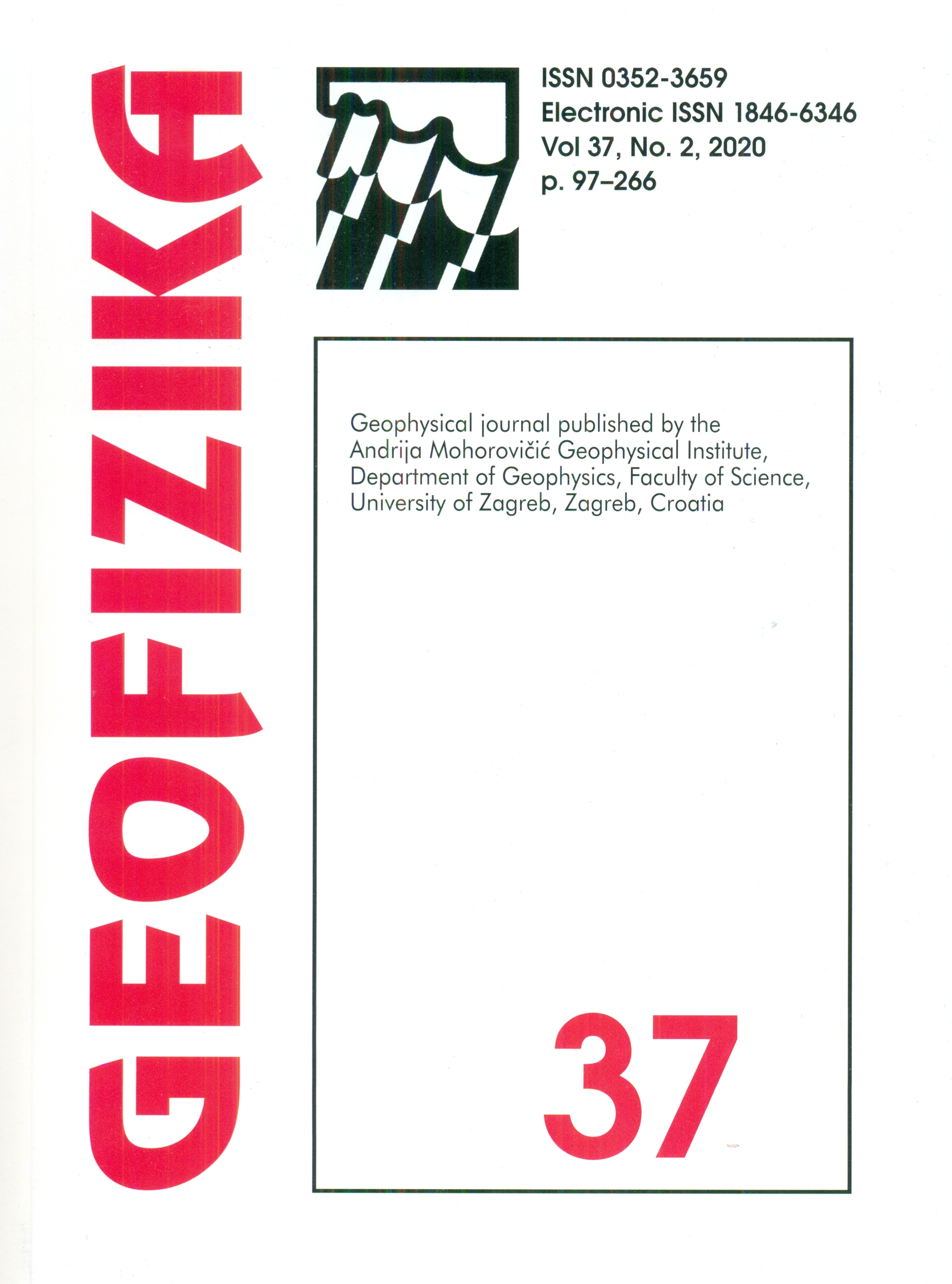Comparison of the Bouguer reduction approach of with satellite gravity data: case study of the eastern Tibetan Plateau and its adjacent areas
DOI:
https://doi.org/10.15233/gfz.2020.37.7Keywords:
Bouguer reduction approach, satellite gravity data, Bouguer gravity anomaly, eastern Tibetan Plateau and its adjacent areasAbstract
Satellite gravity data are widely used in the field of geophysics to study deep structures at the regional and global scales. These data comprise free-air gravity anomaly data, which usually need to be corrected to a Bouguer gravity anomaly for practical application. Bouguer reduction approaches can be divided into two methods based on the coordinate system: the spherical coordinates method (SBG) and the Cartesian coordinates method; the latter is further divided into the CEBG and CBG methods, which do and do not include the Earth's curvature correction. In this paper, free-air gravity anomaly data from the eastern Tibetan Plateau and its adjacent areas were used as the basic data to compare the CBG, CEBG, and SBG Bouguer gravity correction methods. The comparison of these three Bouguer gravity correction methods shows that the effect of the Earth's curvature on the gravitational effect increases with increasing elevation in the study area. We want to understand the inversion accuracy for the data obtained by different Bouguer gravity reduction approaches. The depth distributions of the Moho were obtained by the interface inversion of the Bouguer gravity anomalies obtained by the CBG, CEBG, and SBG, and active seismic profiles were used as references for comparison and evaluation. The results show that the depths of the Moho obtained by the SBG inversion are more consistent with the measured seismic profile depths. Therefore, the SBG method is recommended as the most realistic approach in the process of global or regional research employing gravity data.
Downloads
Published
Issue
Section
License
Copyright (c) 2021 Geofizika journal

This work is licensed under a Creative Commons Attribution-NonCommercial 4.0 International License.

